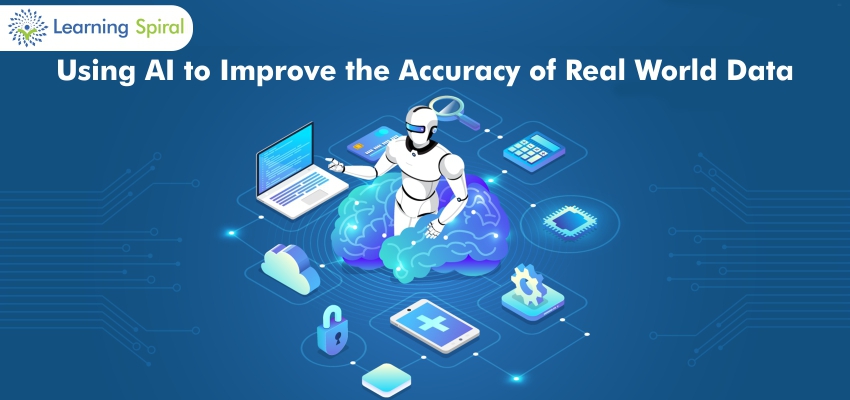
AI is the trending tech that transforming human lifestyle
We all are aware of AI and its applications in our daily life nowadays but knowing this tech deeply is something else. AI is the field of study that deals with building machines that can work, think, and react like human beings. Machine Learning (ML) and Deep Learning (DL) are subsets of AI and are often used synonymously these days. A Deep Neural Network is a byproduct of research in AI and is based on the neural network system of the human body. A human brain contains as many neurons as there are stars in the Milky Way, in the ballpark of 100 billion! Each neuron is connected to thousands of others via junctions called synapses. The strength of the connections determines how the information is processed in the brain.
The same concept has been transferred to the field of computer science. We give different datasets to an AI model, which is basically a mathematical function with some parameters (a good example is the weights in a neural network) and hyperparameters (a good example is the learning rate for training a neural network). Imitating the biological process, the inputs of all the artificial neurons, along with their weights, are passed through what is called an activation function to determine the next state. The multiple states that the data passes through help in training the AI model and figuring out different patterns. This in turn helps to build new products and make critical decisions related to humans.
State of AI:
We Humans’ are currently standing at the beginning of the AI era. What we currently have is narrow AI or weak AI, which actually reduces human efforts significantly though it fails to analyze human emotions and intelligence to some extent.
AI challenges to the professionals:
Some intoxications are mixed with reality and made AI unconscious about the environment. We heard about some misinterpretations lately on Google photos platform. Which classified African American people as Gorillas. Google fixed that bug and published the app update later.
Impact of AI or ML on software development and testing:
A recent study by Gartner shows that by 2020, AI will be pervasive in almost all software products and services. The major highlight of the study was how our skills as engineers would have to adapt accordingly. The current roles in companies are going to change significantly and we need to be prepared for it.

We do not control or understand how the algorithm forms different relationships and makes decisions like a black box. we just provide different training datasets and monitor the learning/progress. We are trying to make predictions on future values based on learning from past examples, or trying to discover different patterns from datasets to distinguish and differentiate each and everything very precisely.
How AI is taking over Jobs:
After all these discussions on AI and automation generally the question arrives, as we already mentioned the current state of AI is weak or narrow, which only means to do one job at a time for which it has been programmed or trained. And the rest of the other things it cannot think about and give reactions or make decisions furthermore. So, even if we work with AI based systems, the need for humans is always going to be important and valuable. We need humans to train the AI, evaluate the AI, and ensure it meets the customer expectations in terms of privacy, security, ease of use, and other factors that are important to stay competitive in today’s market. So, contrary to popular belief, the outlook is not all “doom-and-gloom”; being a real human does have its advantages.
And the future of technology is AI:
Automation is only going to make our lives easier. We can use AI to automate mundane and repetitive tasks and use it to comb through thousands of datasets to find patterns quickly which would otherwise be hard and time-consuming to do manually.
AI helping medics in this pandemic situation:
AI has become a key weapon in tracking and tracing cases during this pandemic. Deploying those technologies has sometimes meant balancing the need to conquer the virus with the conflicting need to protect individual privacy. As the initial crisis gives way to long-term policies and public health practices, governments will need to build trust in AI to ensure future protections can be deployed and maintained.
AI’s surveillance superpowers are being used to help break the chains of viral transmission across the globe. Russia, for instance, maintains COVID-19 quarantines through large-scale monitoring of citizens with CCTV cameras and facial recognition.
China is using AI-powered drones and robots to detect population movement and social gatherings and to identify individuals with a fever or who aren’t wearing masks.
Meanwhile, Israel is using AI-driven contact tracing algorithms to send citizens personalized text messages, instructing them to isolate after being near someone with a positive diagnosis.
The fuel for much of this life-saving AI is personal data. In fact, South Korea’s high-octane blend of data from credit card payments, mobile location, CCTV, facial scans, temperature monitors, and medical records has been a key part of a broader strategy to trace contacts, test aggressively and enforce targeted lockdowns. The combination of these effects has helped the country flatten its curve. Late into its outbreak, the country still had not suffered more than eight deaths on any one day.
Learning spiral has a workforce with a diverse set of skills and the ability to deliver data annotation and data labeling at scale. We have a rich history of 10+ years of handling sensitive data on a large scale. We are here to Empower your algorithm and bridge the gap between machines and humans with our reliable data labeling and data annotation services.
Thanks For reading!

